When decorating a new house, the storage cabinets in these 8 spaces are very important, and many owners don’t understand
Storage is an essential design point in our daily life. It mainly plays a role in organizing daily necessities such as furniture and sundries. Especially for small-sized families, the owners are most worried about insufficient storage space and unreasonable area division.
Next, the designer summarizes the internal partitions of the storage cabinets in these 8 areas, makes good partitions, and organizes things by category. While satisfying the storage function, it also increases the decorative effect. I believe that no matter how many things there are, they will not be messy.
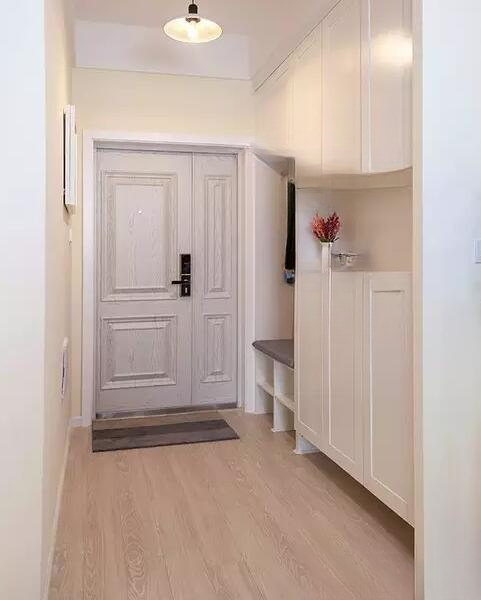
Entrance cabinet
Decorative cabinet
Living room TV cabinet
Sideboard
Wardrobe
Kitchen Cabinets
Bathroom Cabinet
Balcony Cabinet
1. Entrance cabinet
The space that people see first when they enter the door is also the place that leaves the first impression on guests, so the storage of the entrance hall focuses on practicality and the creation of atmosphere, and it should be small and beautiful.
The entrance cabinet is essential for every homeowner during the decoration process.
The simplest and most direct way to classify is to divide it according to the frequency of use. Place the shoes, boots and bags that are frequently worn in the season in the most accessible place, and place out-of-season items on the upper layer.
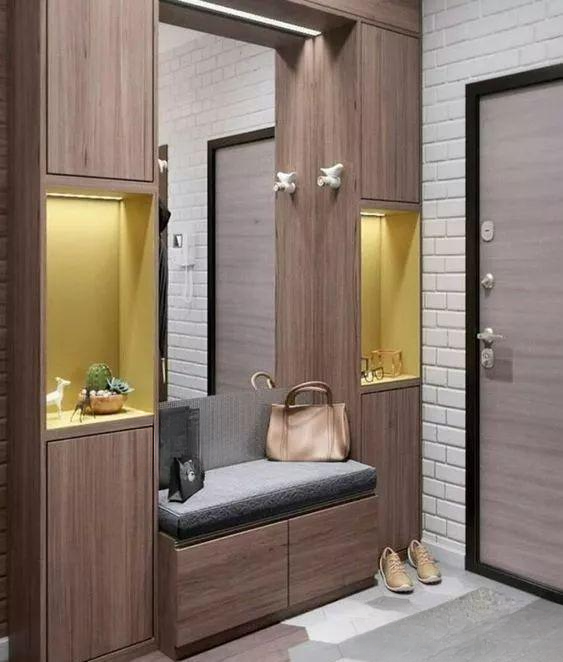
In addition to using the most common integrated entrance cabinet for storage, you should also make more use of wall space.
Installing fixed racks and hooks provides a place for daily items such as clothes, bags, keys, etc. It is simple and outstanding, and can easily turn a small entrance into a practical and beautiful storage space in the home.
Hallway cabinet storage partition:
Seasonal storage area: can store shoe boxes, or place seasonal small appliances such as electric heaters
Dressing area/storage table: organize clothes and put on makeup before going out; temporarily store items after entering the house.
Bag Storage Area When you go home from get off work, leave a dedicated area for your bags and briefcases.
The shoe storage area has layered storage and comes with deodorizing and disinfecting functions.
The cute pet storage area stores pet toys, brushes, leashes and other items .
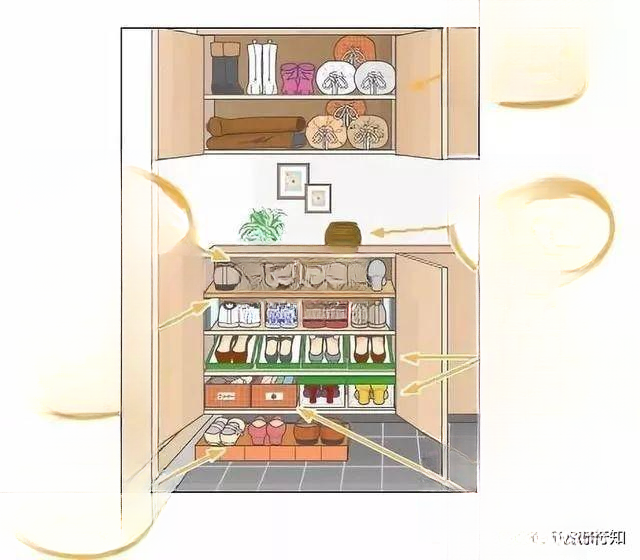
2. Decorative cabinet
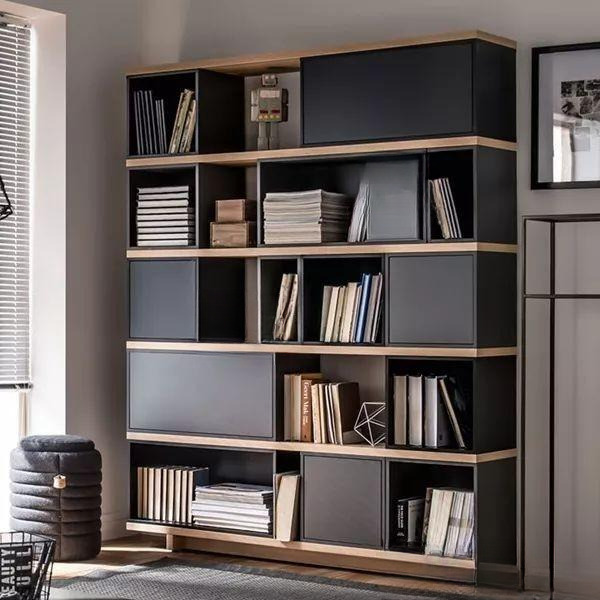
There are two main types of decorative cabinets:
High cabinet
Low cabinet
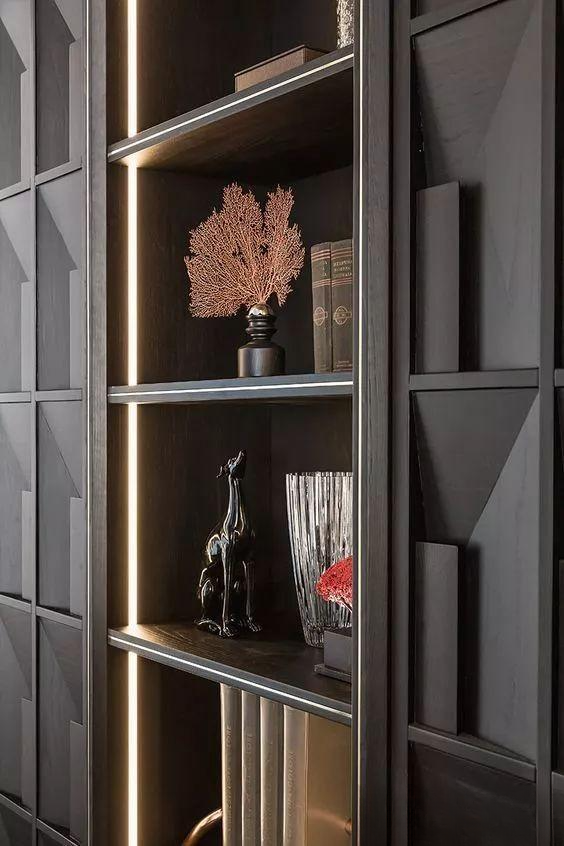
Decorative tall cabinet↑
Decorative tall cabinet: It can be said to be the most beautiful cabinet in the home, but the decorative cabinet is not only for decoration. To design a perfect decorative cabinet, you should pay attention to the storage function.
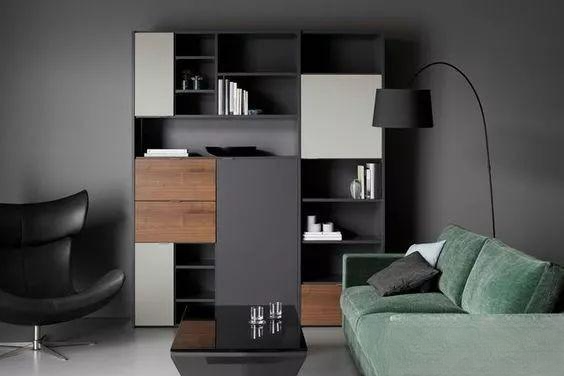
Decorative tall cabinet↑
Because of its high appearance, it is generally used in the most eye-catching places, such as living rooms, dining rooms, study rooms and other spaces.
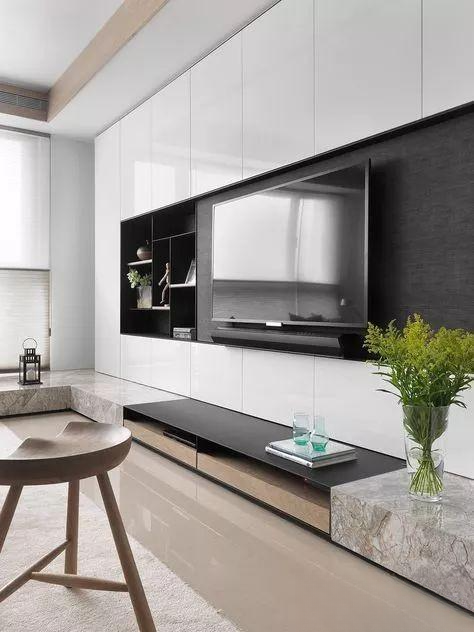
Background cabinet↑
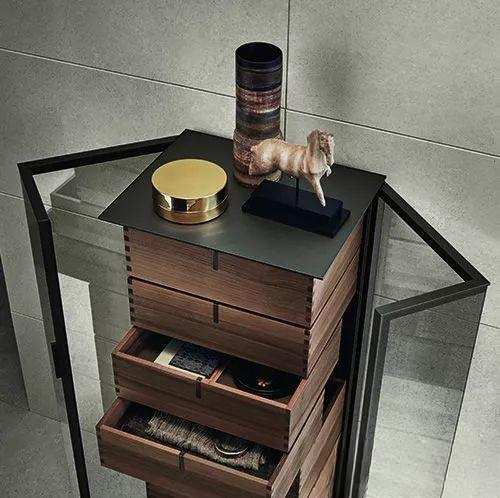
Decorative low cabinet↑
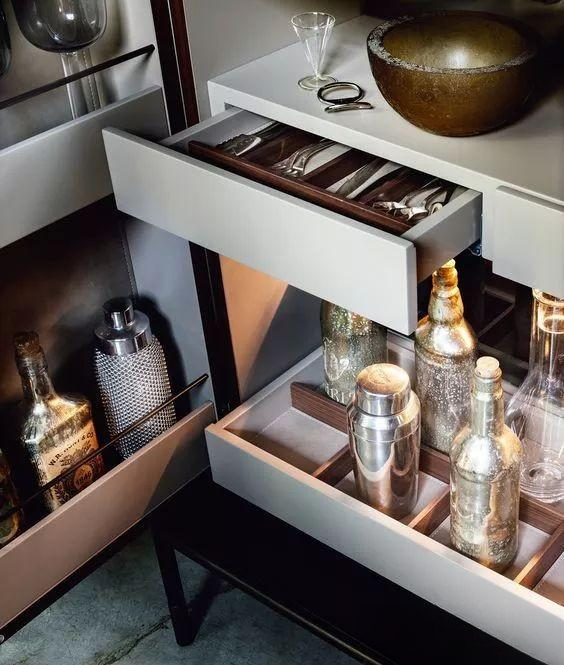
Decorative low cabinet↑
Decorative low cabinet:
Height: 500mm to 600mm is appropriate
Depth: 300mm to 450mm
Length: 1200mm to 3900mm
In this way, many household sundries can be stored, which does not affect the appearance and can also improve the utilization of indoor space. In addition, the low cabinet can also be placed in the bedroom, study, dining room and other places to play a variety of functions.
3. Living room TV cabinet
Many people will choose to customize the TV cabinet. It is recommended to use a combination of open and closed cabinets. If you want it to look more neat and generous, it is recommended to hide 8 and expose 2, so that the whole space looks more simple and elegant.
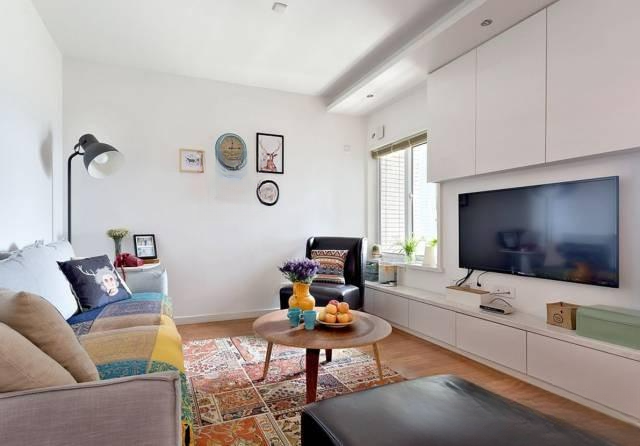
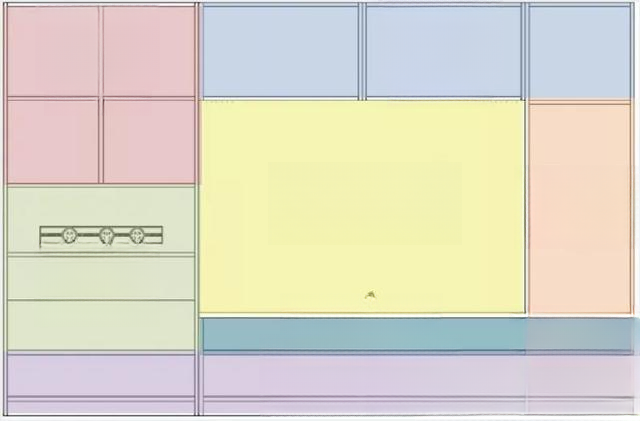
Internal partitions
▲TV cabinet partition
The common storage area is used to store items such as cups, books, and household gifts.
The modular power supply and folding desk in the office area form a temporary office area, with one high and one low shelf to store books and file boxes respectively.
The exhibition area displays handicrafts, photos, books, etc.
Children's toy storage area Children's stationery is stored in the bottom cabinet for easy access.
Spare storage area (seasonal items) for living room items such as cushions and pillows, and small appliances such as electric heaters.
The TV audio-visual center uses various cable management devices to organize the complex lines in the CBD in an orderly manner.
Video storage area
Storage for stereos, CD players, routers, set-top boxes, etc.
4. Sideboard
The sideboard plays the role of meal preparation and storage. Simple meal preparation and tableware storage will bring more convenience to dining. It is necessary to do a good job of storage in the sideboard.
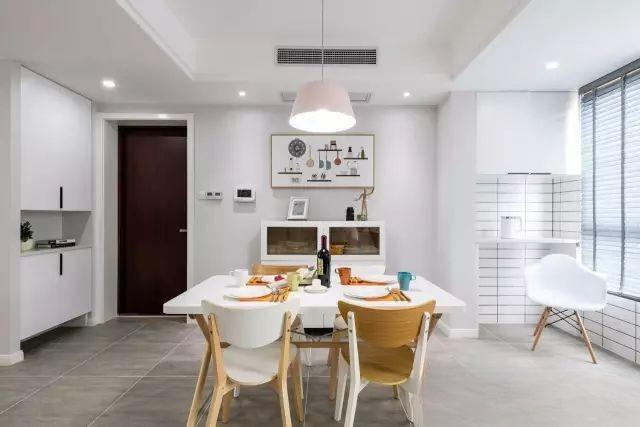
Movement route: meal preparation - temporary seasoning - soup/rice serving - clean up after meal
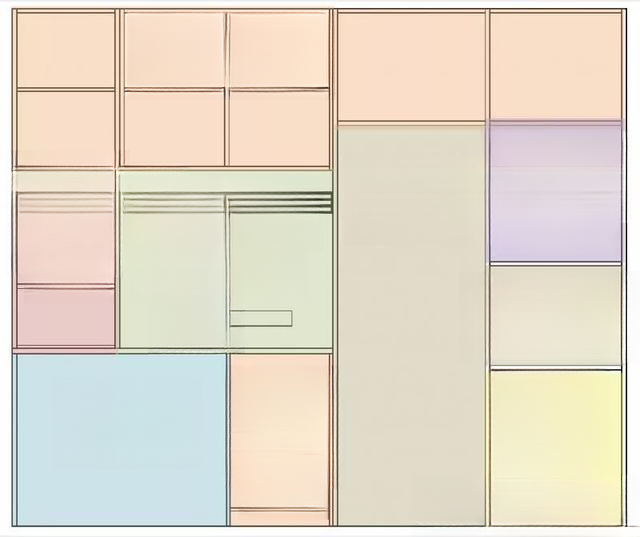
▲See the sideboard partition diagram
Sideboard partition
The top cabinet of the spare storage area stores household spare items such as paper towels, dry goods, dry food, etc.
The workbench area can be used to store temporary seasonings, and soup pots and rice cookers can be placed when dining. The power supply distribution is convenient, and multiple small kitchen appliances can be used at the same time, making meal preparation more efficient.
The dining table is embedded in the table to save space. It can be moved out when the number of diners increases. The embedded space can store 5 boxes of drinks or fruits.
The wine storage area houses small kitchen appliances such as soymilk machines, yogurt machines, and fruit machines.
5. Wardrobe
Speaking of wardrobes, what attracts the most attention from our designers and homeowners is the wardrobe. Let's focus on the following:
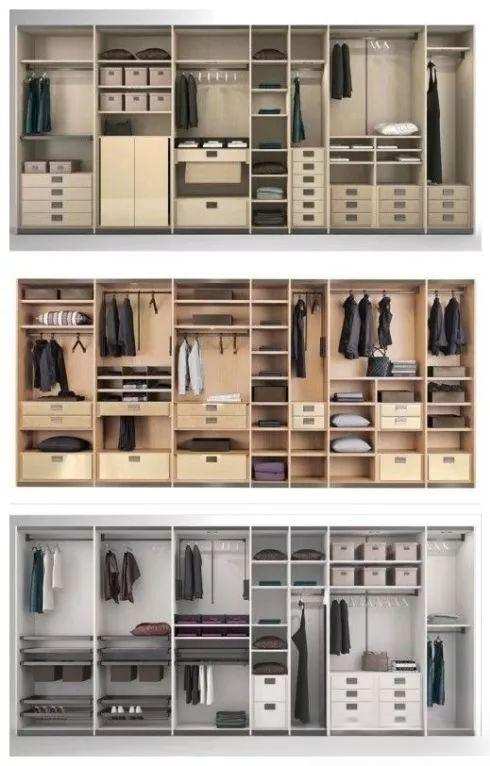
Wardrobe↑
1. Standard size of wardrobe
Standard dimensions for wardrobes: The width of a normal wardrobe door should be around 55cm, while the width of a sliding door should be around 60cm
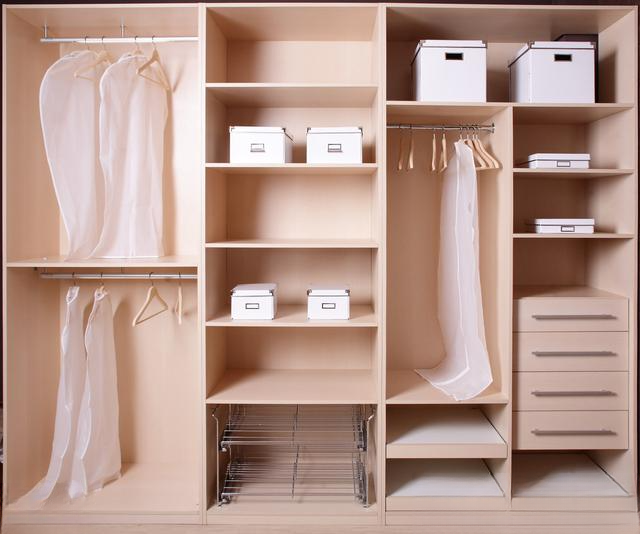
The height difference between the clothes rail and the bottom plate in the long hanging area should be 1.35 meters.
The height difference between the clothes rail in the short hanging area and the bottom plate should be 0.9 meters.
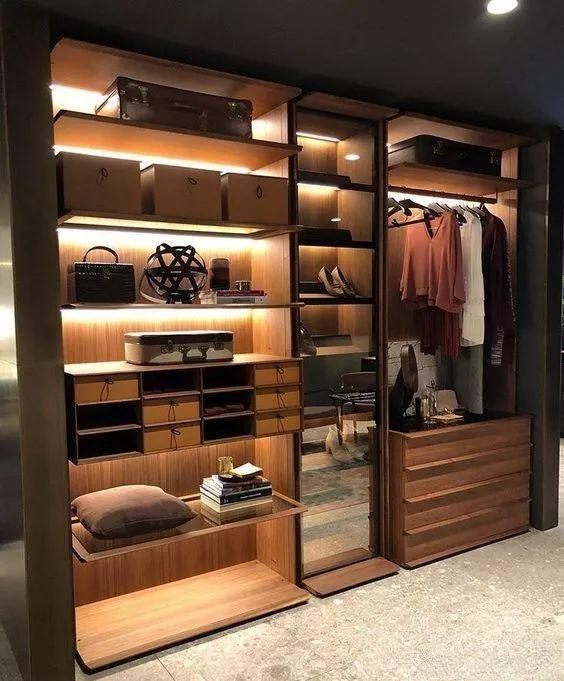
Depth of wardrobe in stacking area: more than 45cm
The height of the drawer cannot be higher than 1.25m from the ground.
Depth: about 40cm to 50cm.
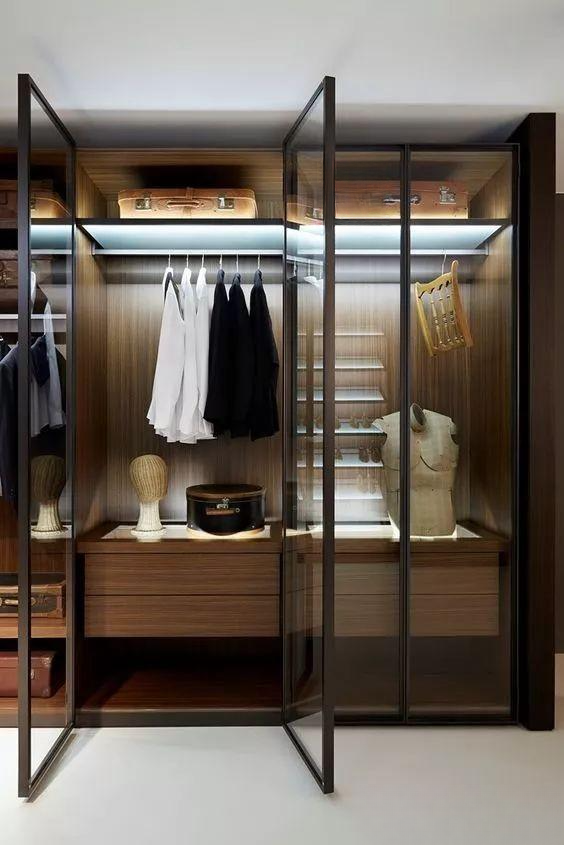
2. Wardrobe door size
The width of the wardrobe door with a swing door is generally between 45 cm and 60 cm.
The width of sliding doors is generally between 60cm and 80cm.
Whether it is a hinged door or a sliding door, the height of the cabinet door is generally between 2.2 meters and 2.4 meters. The part that exceeds 2.4 meters is generally more suitable to be designed as a top cabinet.
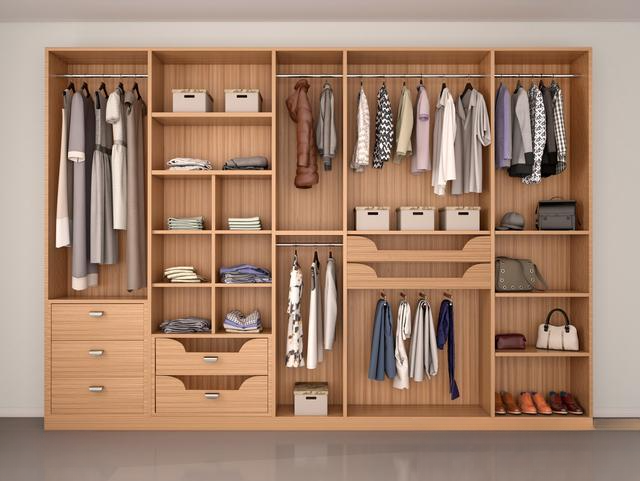
3. Optimal depth of wardrobe
If the depth of the wardrobe is too deep, it will cause a waste of wardrobe space. If the depth is too shallow, the clothes cannot be hung and wrinkles will easily appear.
Therefore, the depth of the wardrobe is about 55cm-60cm. Excluding the thickness of the doors and back panels, the depth is usually around 53cm-58cm.
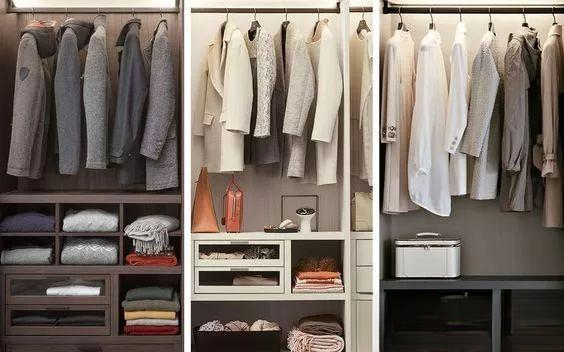
4. Clothing hanging area
Long hanging area
Short hanging area
The long hanging area is used to hang long clothes such as coats. The height of the clothes hanging rod should be at least 1.3 meters above the bottom plate.
The short hanging area is used to hang ordinary tops, and the height of the clothes hanging rod must be at least 0.8 meters from the bottom plate.
In addition, if a clothes hanger is used, the gap between the clothes hanger and the bottom plate should be more than 70 cm, and there should be a distance of about 10 cm from the clothes hanger to the top surface of the pants hanging area to ensure that the clothes hanger can be easily removed.
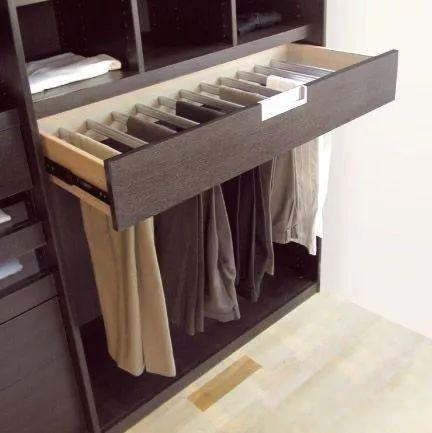
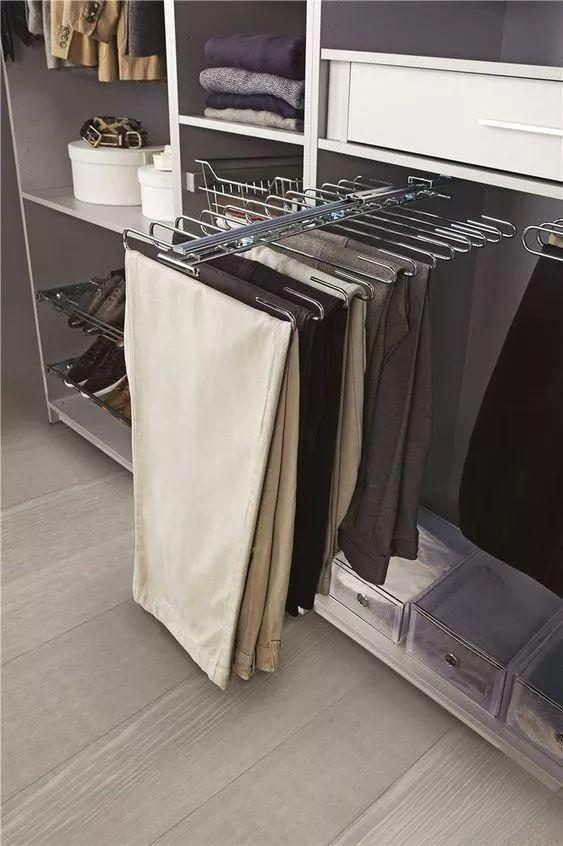
5. Pants hanging area
If the trouser hanging area uses a wardrobe trouser rack, the gap between the trouser rack and the bottom plate should be more than 65 cm.
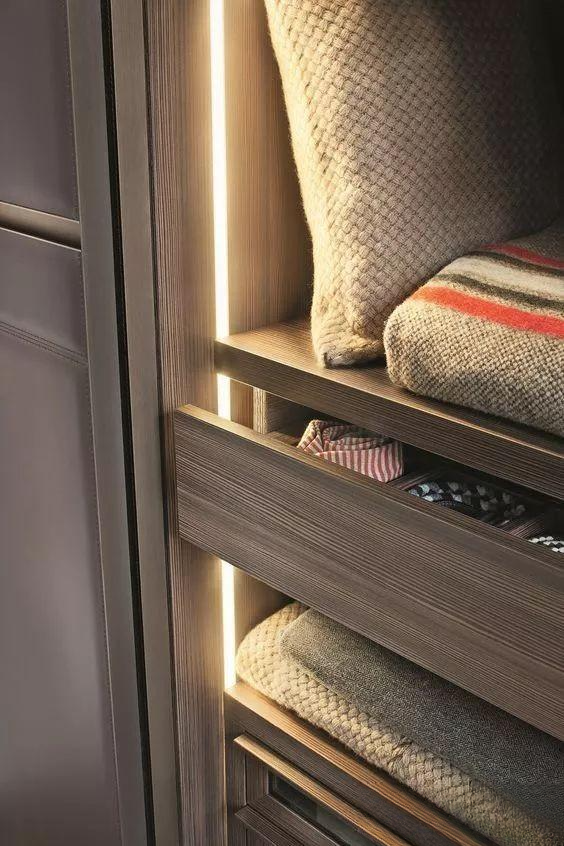
6. Stacking area
The stacking area is generally used to place smaller items or stackable clothing. If the space is too large or too small, it will affect normal use.
The specific dimensions of the depth, width and height of the stacking area are as follows:
Depth: 40 cm - 60 cm,
Width: within 33cm-40cm,
Height: about 35 cm.
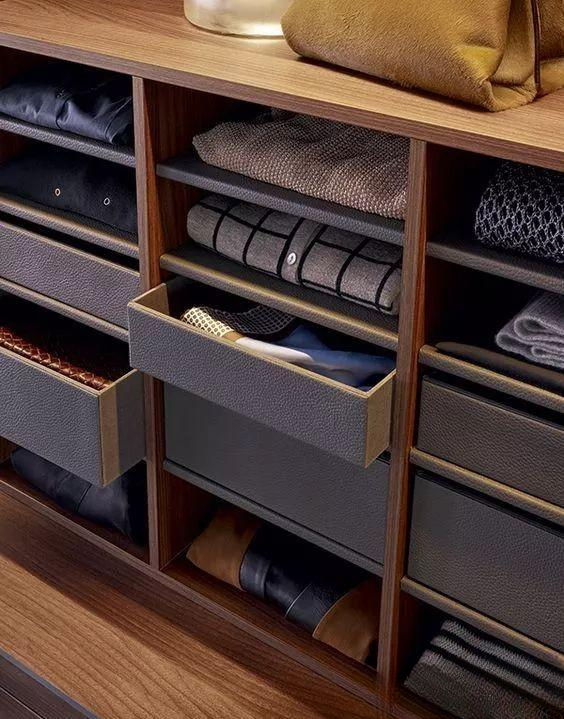
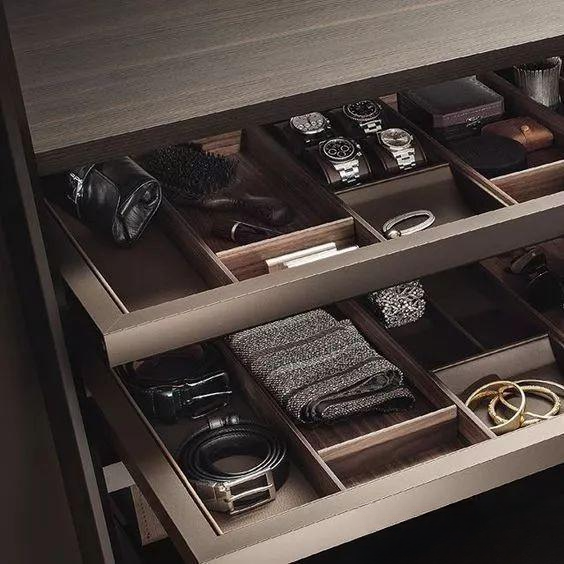
7. Drawers
The height of the drawer should be around 15 cm to 20 cm.
The width should be around 40cm to 80cm.
The depth of the drawer should be about 40 cm to 50 cm.
The internal structure of the wardrobe is suitable for 96% of people!
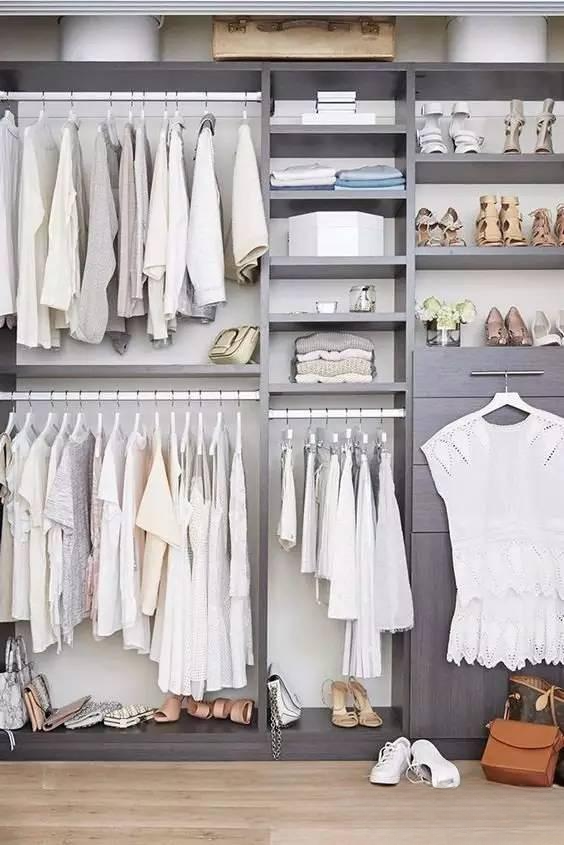
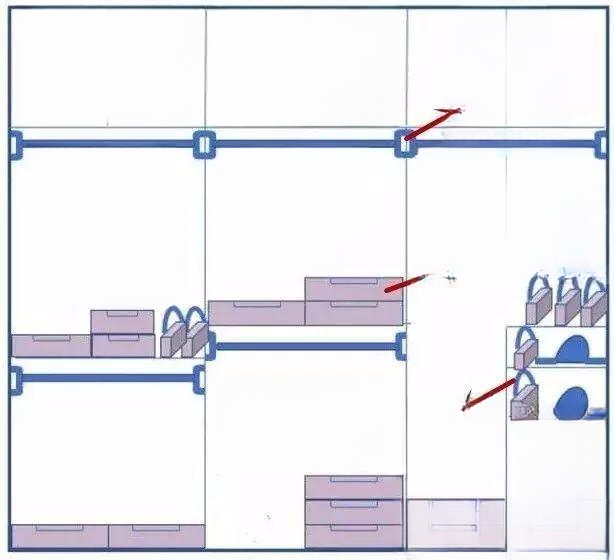
▲Interior partition of wardrobe
There are also techniques to the order of hanging. Like the picture below, hang the clothes in order of length as shown in the picture on the left, and place storage boxes in the reserved space. This can make use of all the dead corners in your wardrobe and make the clothes more neat and orderly.
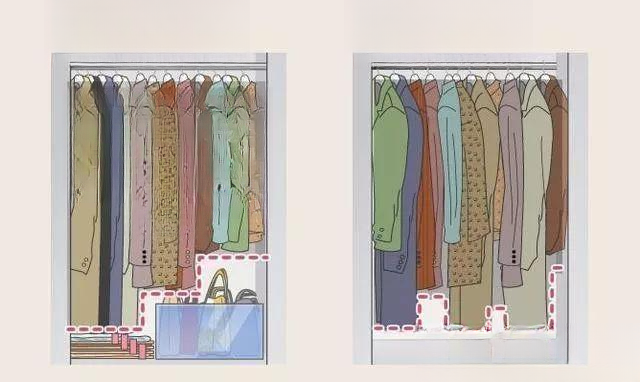
▲Please refer to the figure for the order of hanging clothes
6. Cabinets
Cabinets are divided into I-type, II-type, U-type, and L-type . The movement lines of each type are different, but they must meet the convenience of use to the greatest extent. The functional division inside the cabinet is also crucial. For example, what to put in the drawers, pull-out baskets, high cabinets, and low cabinets must be reasonably planned, which can not only keep it tidy, but also make it easier to use.
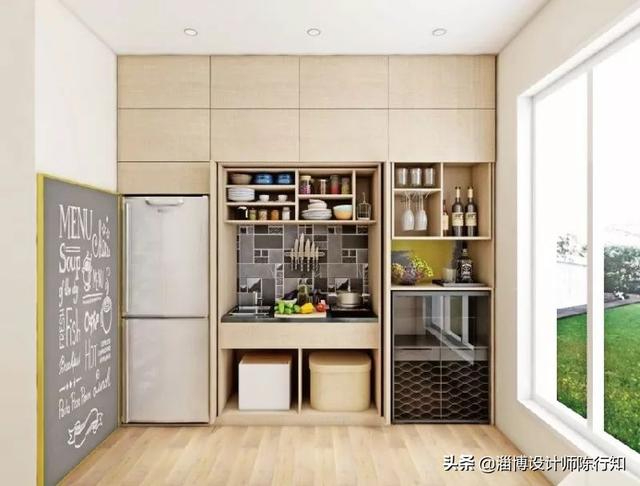
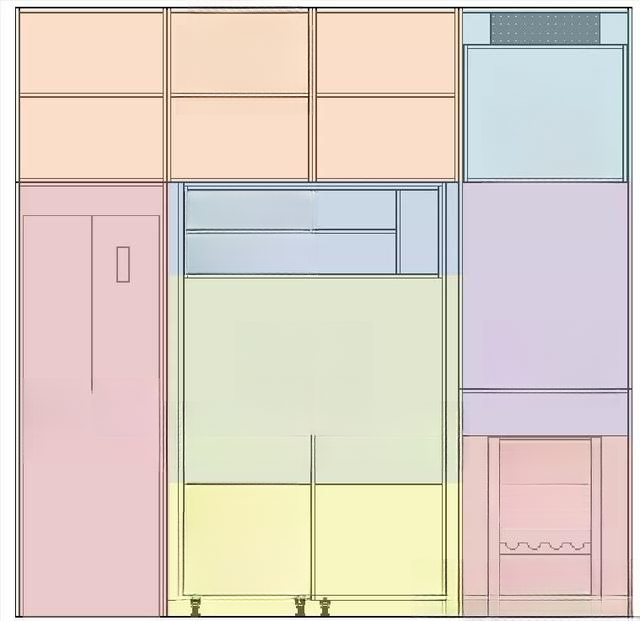
▲See the cabinet storage partition diagram
Cabinet storage partition:
Dry goods storage area top cabinets store dry goods, dry food, household supplies
Small appliances can be used on the workbench in the food preparation area, or dishes can be temporarily placed there.
Cooking area with built-in sink and induction cooker
The seasoning area displays commonly used seasonings
The tableware storage area can store bowls, plates, cups, spoons and other tableware, and the liftable wall cabinet allows for easy access.
The pot and pan storage area sink cabinet stores large items such as pots and pans.
7. Bathroom Cabinet
There are a lot of clutter in the bathroom, and the messy problem has troubled many people. Next, the designer will show you how to store it more reasonably.
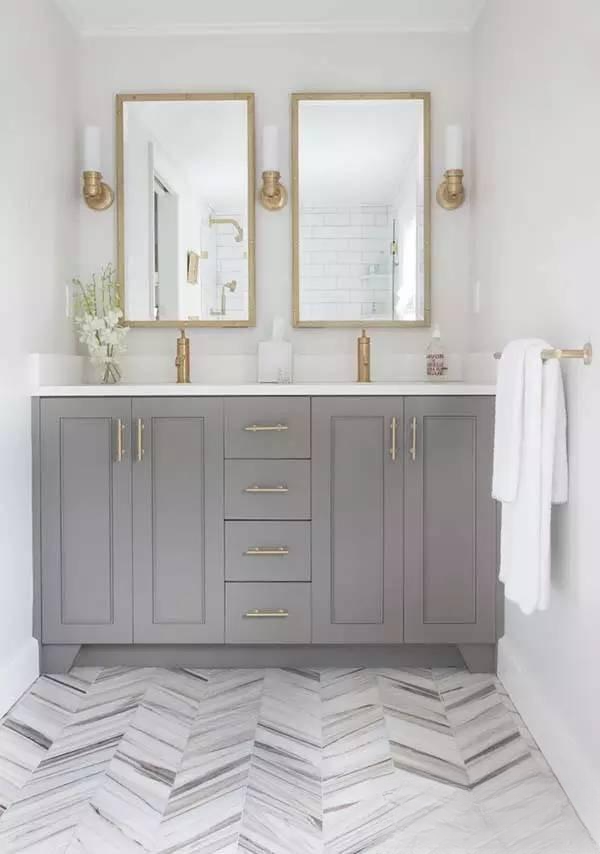
Washing route: shaving/removing makeup - brushing teeth - washing face - drying - putting on makeup
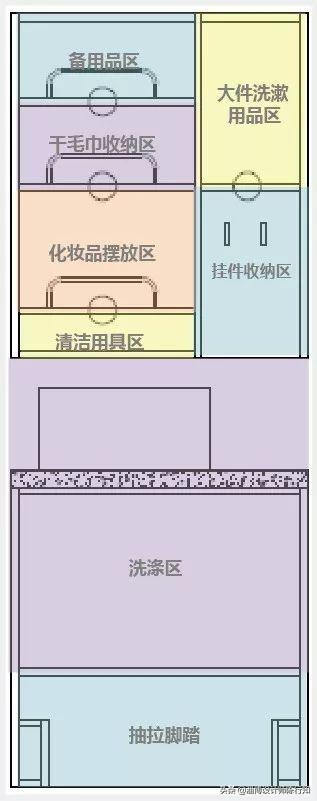
The pull-out footrest designed specifically for children has a high structural strength, is stable and safe, and solves the height problem of children washing and looking in the mirror.
8. Balcony Cabinet
Just finished washing clothes in the bathroom, and you still have to hang them on the balcony? Consider the reasonable partitioning of the storage balcony cabinet!
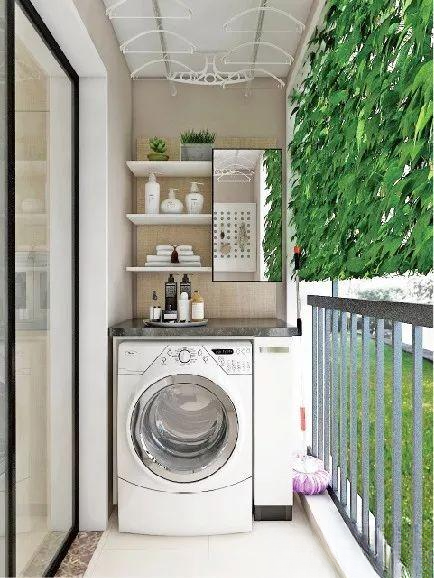
Laundry and housework route: washing - drying - ironing - folding clothes
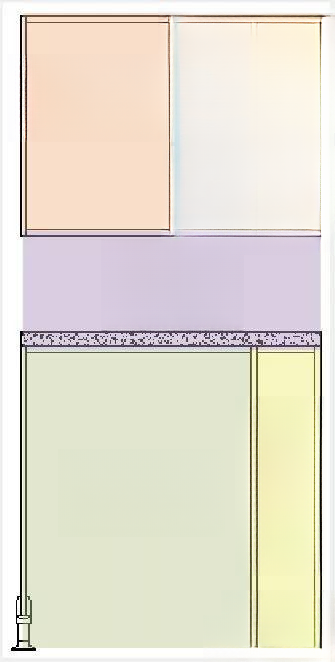
Balcony cabinet storage partition:
The spare storage area can be used to place green plants or store spare detergents, paper towels, towels, etc.
The work surface in the workbench area can be used for ironing, folding clothes, or temporarily placing items.
Pegboard
The perforated board set in the mirror cabinet is used to store hangers. It should have a large capacity and save depth space.
Narrow cabinet position
For storing washing supplies, it can be pulled out smoothly and is easy to use.
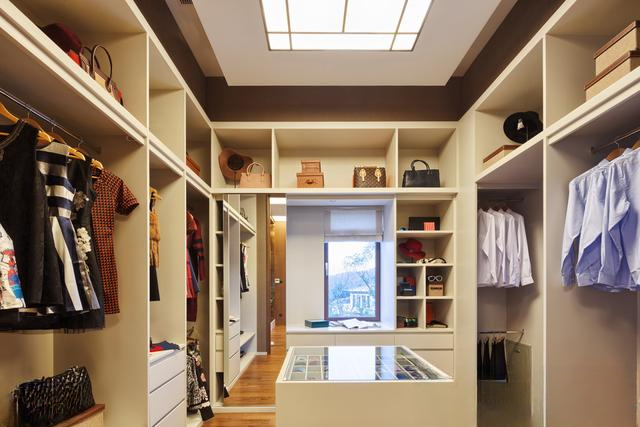
That’s all about the classification of cabinets today. Next, let’s talk about panels and give away benefits.
Classification of common storage cabinet panels:
For the common boards, there are several types of board classification:
Solid wood board
Large core board
Bamboo puzzle
Density board
Veneer
Thin core board
Melamine board
Paint board
Particle Board
So what are the differences between these boards? Years of experience have summarized the characteristics of these boards as follows:
Characteristics of different boards
1. Solid wood board
Solid wood boards are durable, with natural grains, and most of them have the unique aroma of natural wood. They have good moisture absorption and air permeability, are beneficial to human health, and do not cause environmental pollution. They are high-quality boards for making high-end furniture and decorating houses. Some solid wood boards made of special materials (such as beech) are also ideal materials for making gun stocks and precision instruments. The most typical feature is environmental protection, which is of course relative.
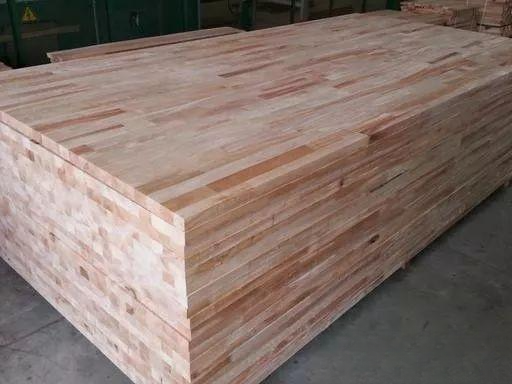
2. Large core board
Also known as blockboard, wood core board, woodworking board. It is made of two pieces of veneer glued together in the middle, and is a plywood.
Since blockboard is a special type of plywood, the production process must also follow the principle of symmetry to avoid warping and deformation of the board.
Advantages: As a thick board, blockboard has the beautiful appearance and similar strength of ordinary thick plywood.
Disadvantages : Blockboard is lighter than thick plywood, consumes less glue, requires less investment, and gives a sense of solid wood, satisfying consumers' desire for solid wood furniture.
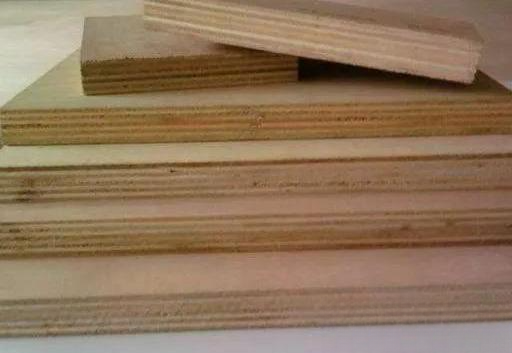
3. Bamboo plywood
It is made of layered bamboo strips and bamboo pieces that are glued together under pressure. There are convex and concave mortise and tenon grooves all around, and anti-slip grooves on the bottom.
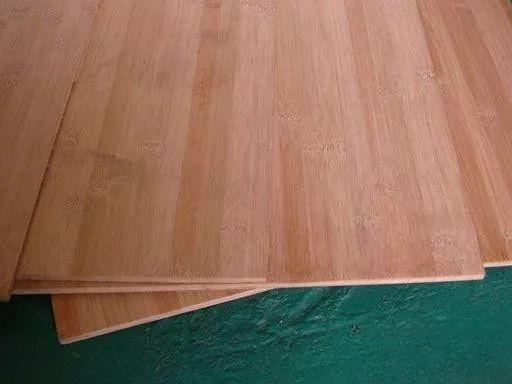
4. Density board
The full name is density fiberboard, which is made of wood fiber or other plant fiber as raw materials. It is prepared by fiber preparation, applied with synthetic resin, and pressed under the adjustment of heat and pressure.
Advantages : This kind of board has a smooth and flat surface, fine material, stable performance, firm edges, and good decorative properties.
Disadvantages : However, the moisture-proof performance is relatively poor, and the nail holding ability is above average. However, if the screws become loose after being tightened, it will be difficult to fix them in the same position.
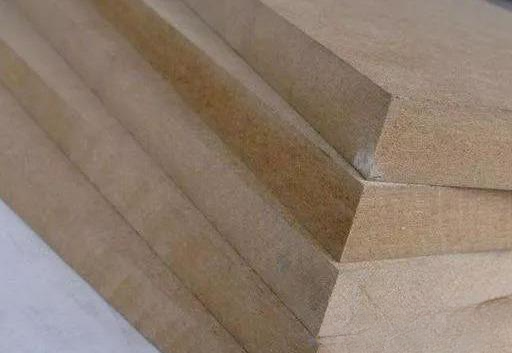
5. Decorative panels
The full name of decorative veneer plywood is a surface material for interior decoration or furniture manufacturing, which is made by slicing natural wood or technical wood into thin slices of a certain thickness, adhering them to the surface of plywood, and then hot pressing. The material classification of this type of board is quite complicated, including stone, ceramic, metal, wood, etc. Different materials have different characteristics.
Advantages: It is highly decorative and directly applicable. It does not require extensive processing and can be used directly. It is also quite beautiful.
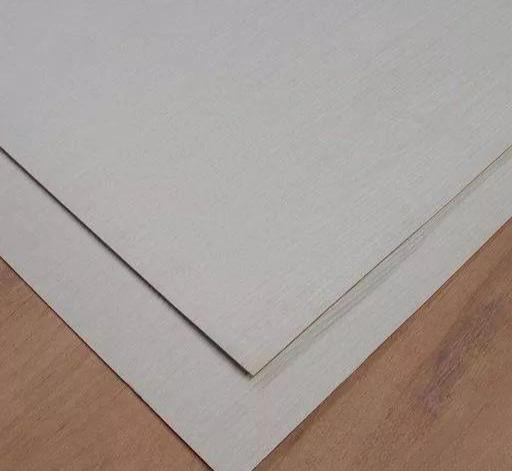
6. Melamine board
The industry prefers to call it ecological board. Its base material is mainly particle board and medium-density fiberboard. It is characterized by high hardness, wear resistance and good heat resistance.
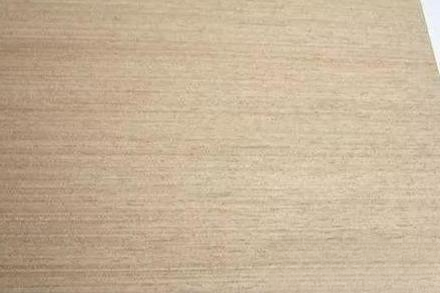
7. Thin core board
It is made of three or more layers of one millimeter thick veneer or thin plate glued together by hot pressing. It is the most commonly used material for handmade furniture. It has high strength and good bending resistance, and is a plywood.
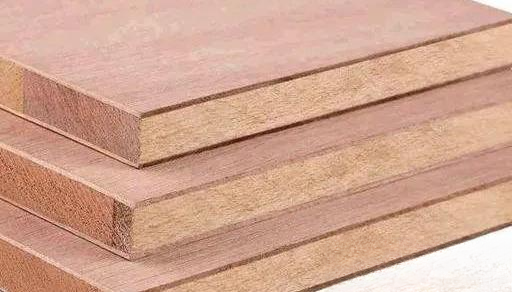
8. Particleboard
The artificial board is glued together under the action of heat and pressure after applying adhesive. Due to its uniform structure, the processing performance is quite good, and it can be processed into large-format boards as needed. In addition, due to its high-density structure, furniture made of particleboard is generally heavier. The solid wood particleboard used in furniture making on the market is also a type of particleboard.
After the above introduction, you should have a specific understanding of various boards, so you can choose the corresponding board according to what cabinet you want to make. . . .
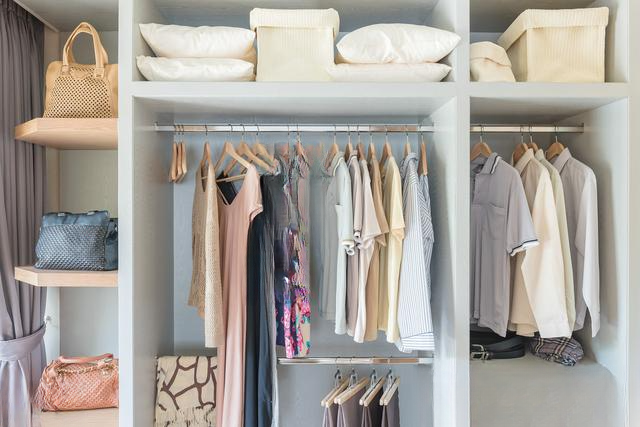
How to maintain and clean storage cabinets
We cannot take stains on storage cabinets in various spaces lightly, because once the stains penetrate deep into the wood, they are difficult to remove and will accompany the cabinet for its entire life.
If the storage cabinet is dirty, as long as the stains are not stubborn, the storage cabinet also needs maintenance.
Some people have cabinets in their homes that have been in their rooms for many years, but they still look as bright and colorful as if they were just bought. How do they do it?
The answer is storage cabinet maintenance. Here are some tips on how to maintain your storage cabinet.
1. Clean with a soft cloth
Many people like to use some old clothes or rough cloth to clean the wardrobe, which is not good. These rough cloths will cause damage to the surface of the cabinet when rubbing against the surface of the cabinet, making it no longer shiny. Therefore, you should use some cloth with better water absorption, such as cotton fabrics or soft cloth to clean.
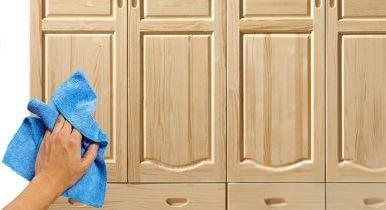
2. Dust the cabinet surface frequently
We can regularly use oil and wax to maintain the cabinet surface. When removing dust from the cabinet surface, do not use acidic liquids or other chemical cleaners. If there are some stubborn stains on the surface, you can use sand wax or a small amount of kerosene to scrub it. If there is dust at ordinary times, you can use soft objects such as soft cloth or feather duster to remove it.
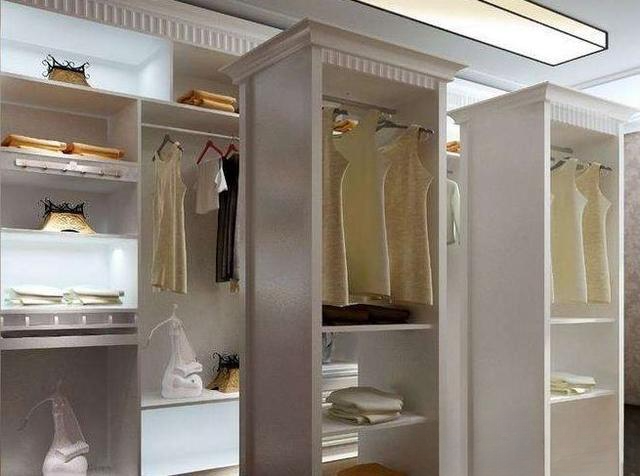
3. Check the cabinet regularly
During long-term use of the cabinet, some connectors are prone to loosening. Regular inspections can help you find and deal with them in time, such as re-tightening the loose connectors and injecting some lubricant.
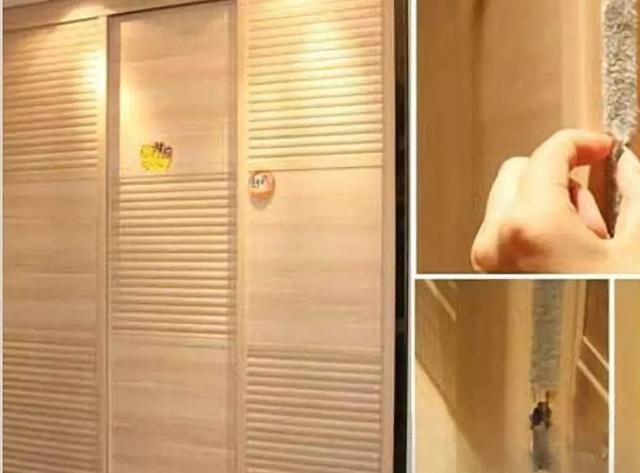
4. Moisture-proof and anti-insect
Put desiccant in the corner of the cabinet to prevent moisture. You can also put some pepper, tobacco leaves, camphor, etc. in the cabinet to prevent rats, cockroaches and moths.
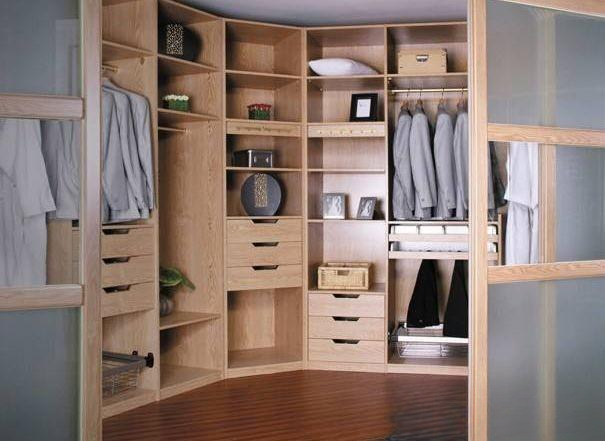
That’s all the designer has to share about storage cabinets today. No matter from which aspect, we should pay attention to it. Click to follow us and share knowledge in the field of home furnishing every day.
